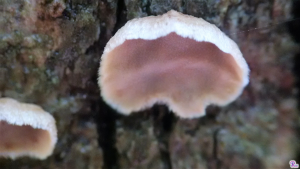#006: Zombie Ants
The parasitic fungus Ophiocordyceps unilateralis infects rainforest ants, turning them into “zombie ants.” The fungus takes over the ants’ minds and directs the ants to die in the most advantageous spot for the fungus. Although this ant/fungus interaction has been known since 1859, it only recently (within the past 5 years) fell under the public eye after a study examined some of the specifics of this interaction. The story starts when a fungal spore lands on the exoskeleton of an unsuspecting ant. The spore germinates and forms an infection structure called an appressorium. This structure is capable of producing enormous pressure (fungal plant pathogens have been known to produce pressures equal to the pressure inside the wheel of a 747) which allows the fungus to penetrate the ant’s exoskeleton. Then, the real fun begins. Ant colonies exhibit a behavior known as “social immunity,” where diseased individuals are forcibly removed from...







![#011: Characteristics of Kingdom Fungi [Archived]](https://www.fungusfactfriday.com/wp-content/themes/hueman/assets/front/img/thumb-small-empty.png)


